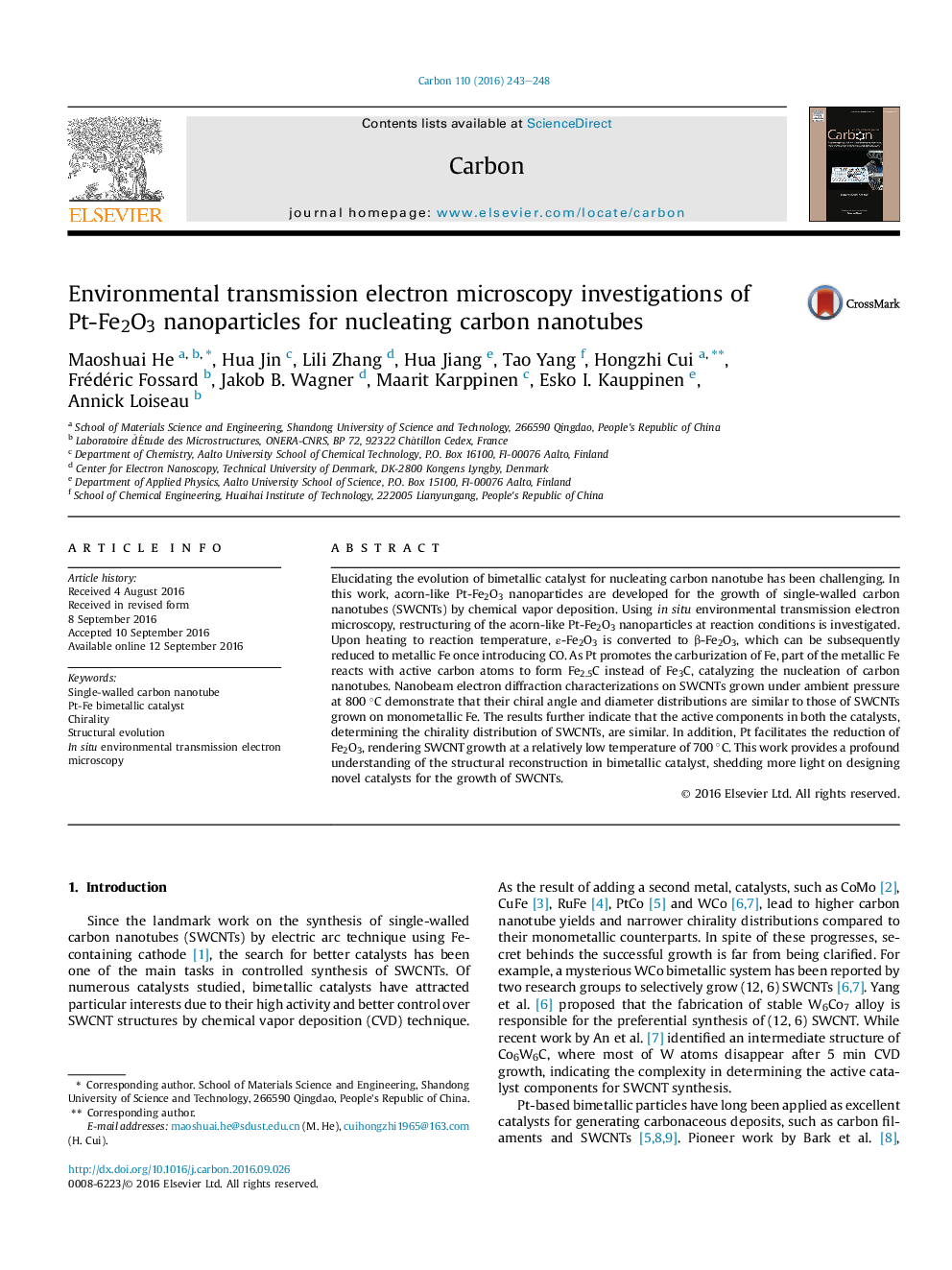| Article ID | Journal | Published Year | Pages | File Type |
|---|---|---|---|---|
| 5432715 | Carbon | 2016 | 6 Pages |
Elucidating the evolution of bimetallic catalyst for nucleating carbon nanotube has been challenging. In this work, acorn-like Pt-Fe2O3 nanoparticles are developed for the growth of single-walled carbon nanotubes (SWCNTs) by chemical vapor deposition. Using in situ environmental transmission electron microscopy, restructuring of the acorn-like Pt-Fe2O3 nanoparticles at reaction conditions is investigated. Upon heating to reaction temperature, ε-Fe2O3 is converted to β-Fe2O3, which can be subsequently reduced to metallic Fe once introducing CO. As Pt promotes the carburization of Fe, part of the metallic Fe reacts with active carbon atoms to form Fe2.5C instead of Fe3C, catalyzing the nucleation of carbon nanotubes. Nanobeam electron diffraction characterizations on SWCNTs grown under ambient pressure at 800 °C demonstrate that their chiral angle and diameter distributions are similar to those of SWCNTs grown on monometallic Fe. The results further indicate that the active components in both the catalysts, determining the chirality distribution of SWCNTs, are similar. In addition, Pt facilitates the reduction of Fe2O3, rendering SWCNT growth at a relatively low temperature of 700 °C. This work provides a profound understanding of the structural reconstruction in bimetallic catalyst, shedding more light on designing novel catalysts for the growth of SWCNTs.
Graphical abstractDownload high-res image (295KB)Download full-size image
